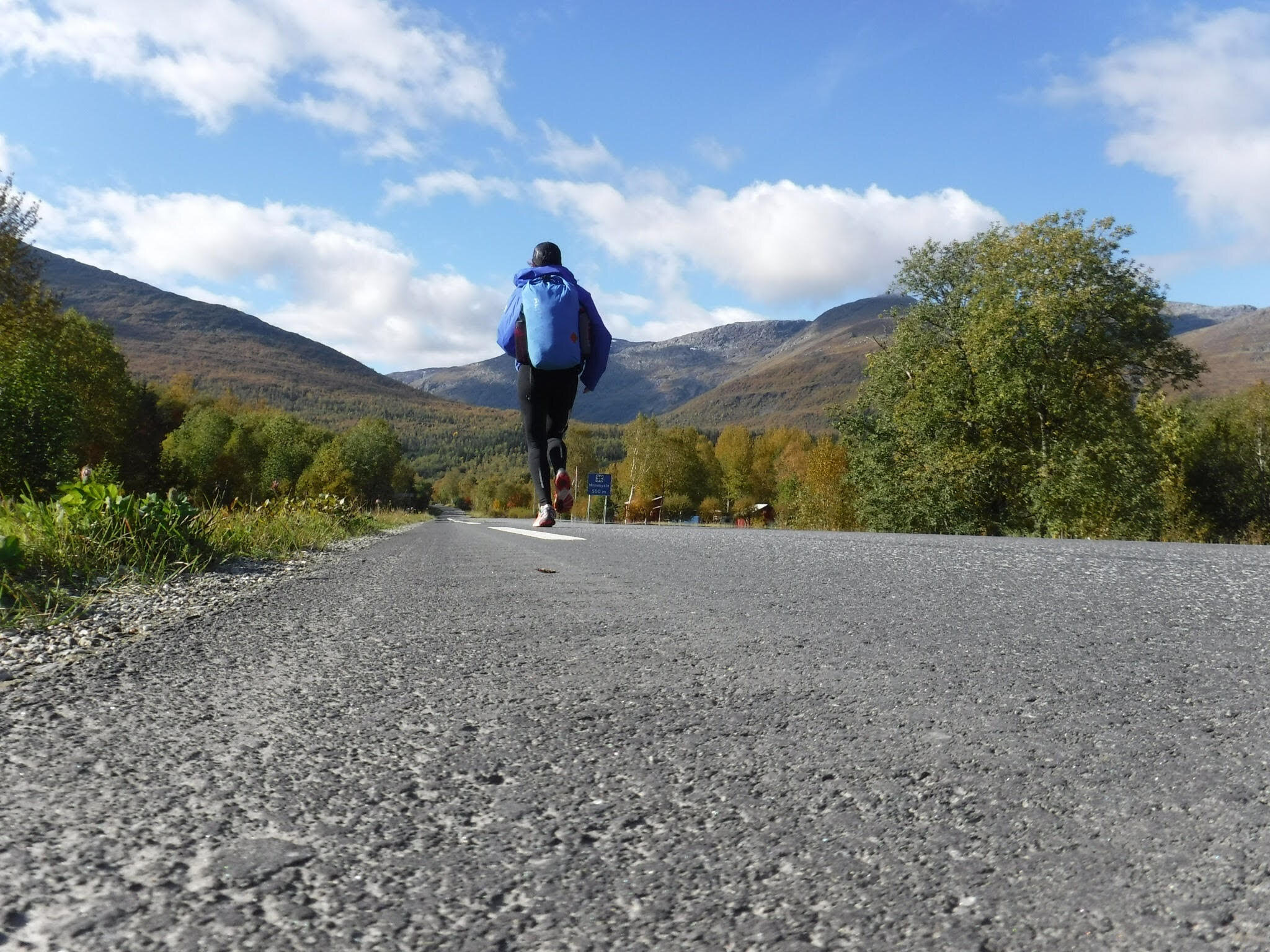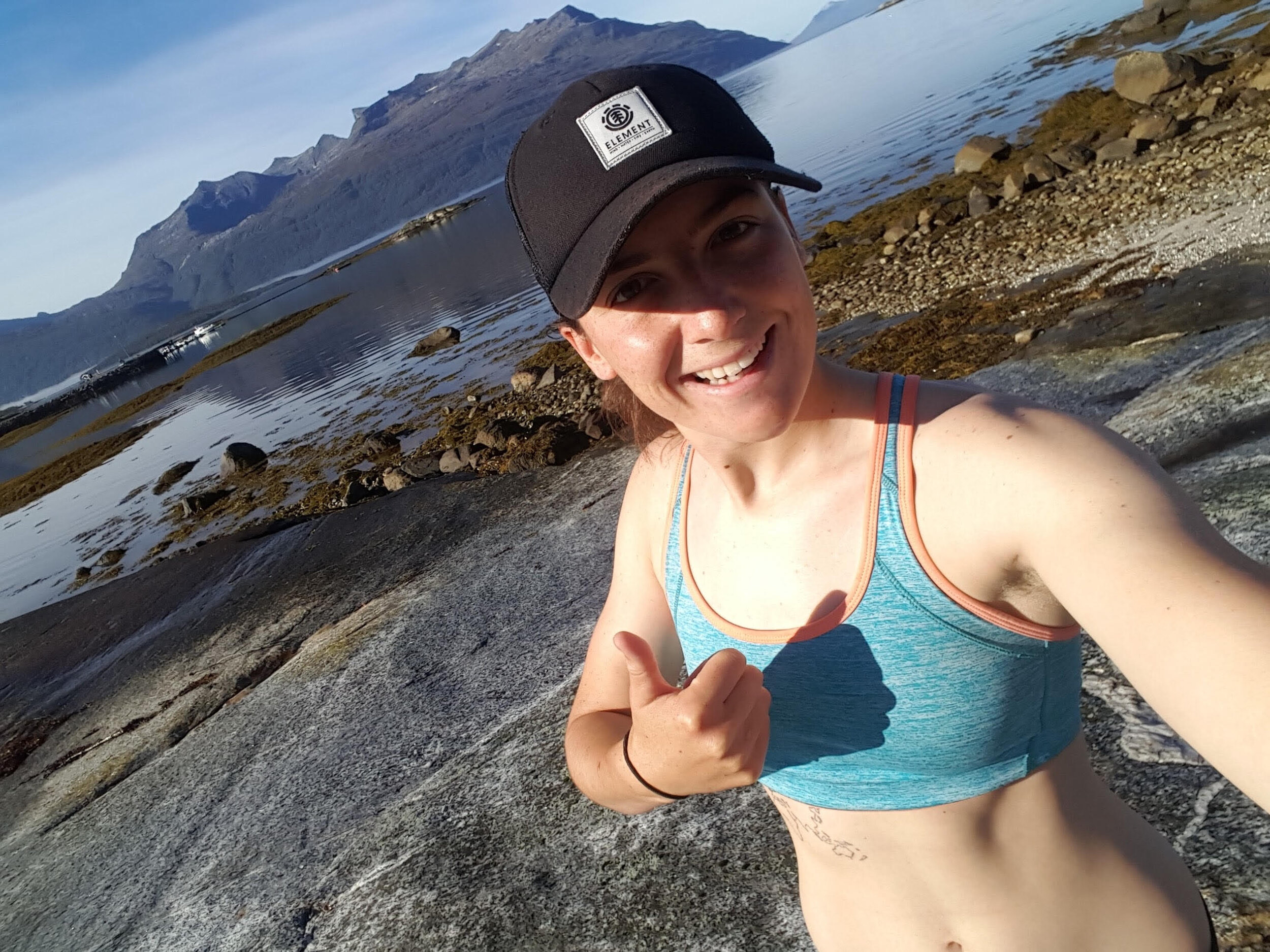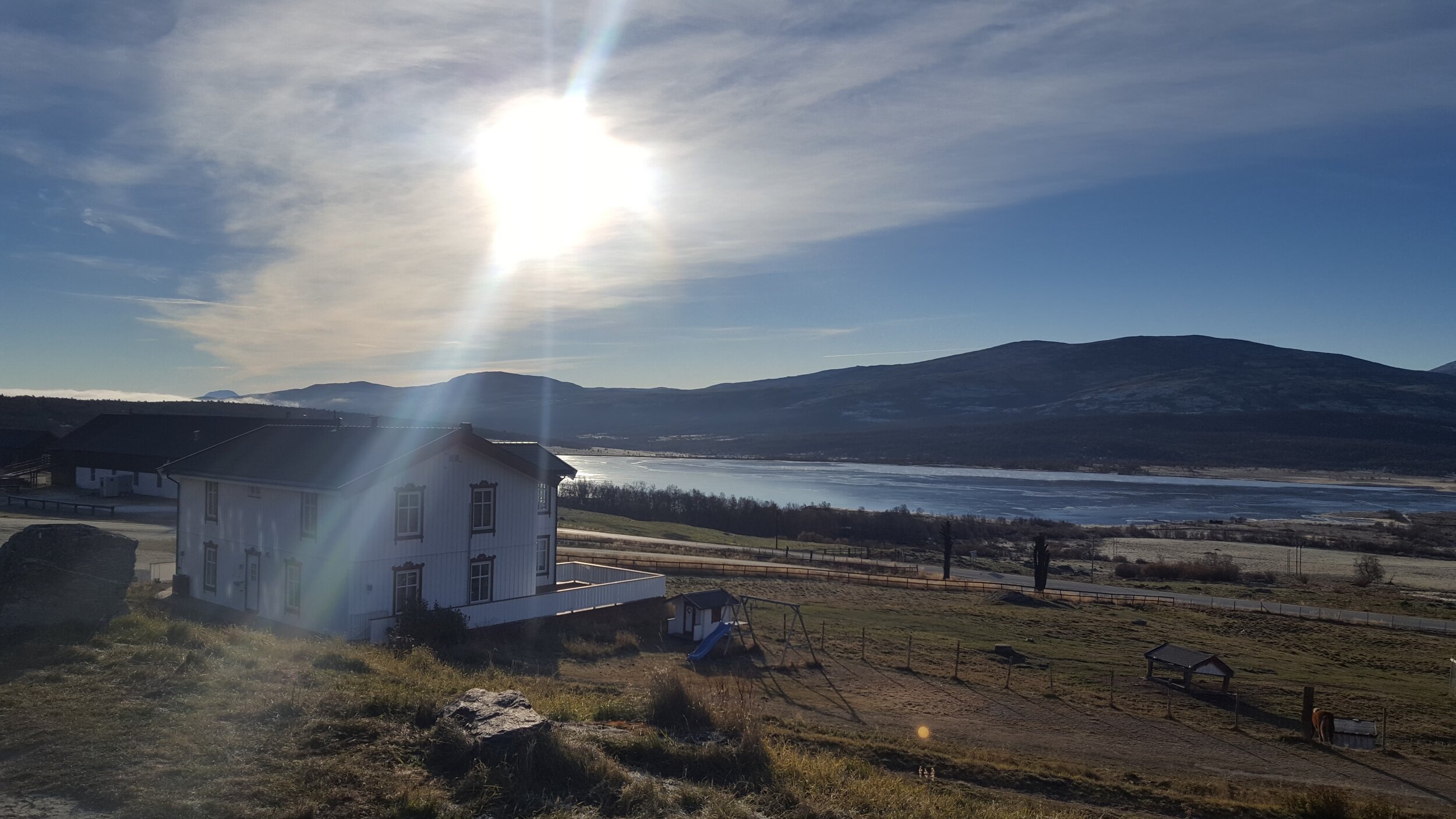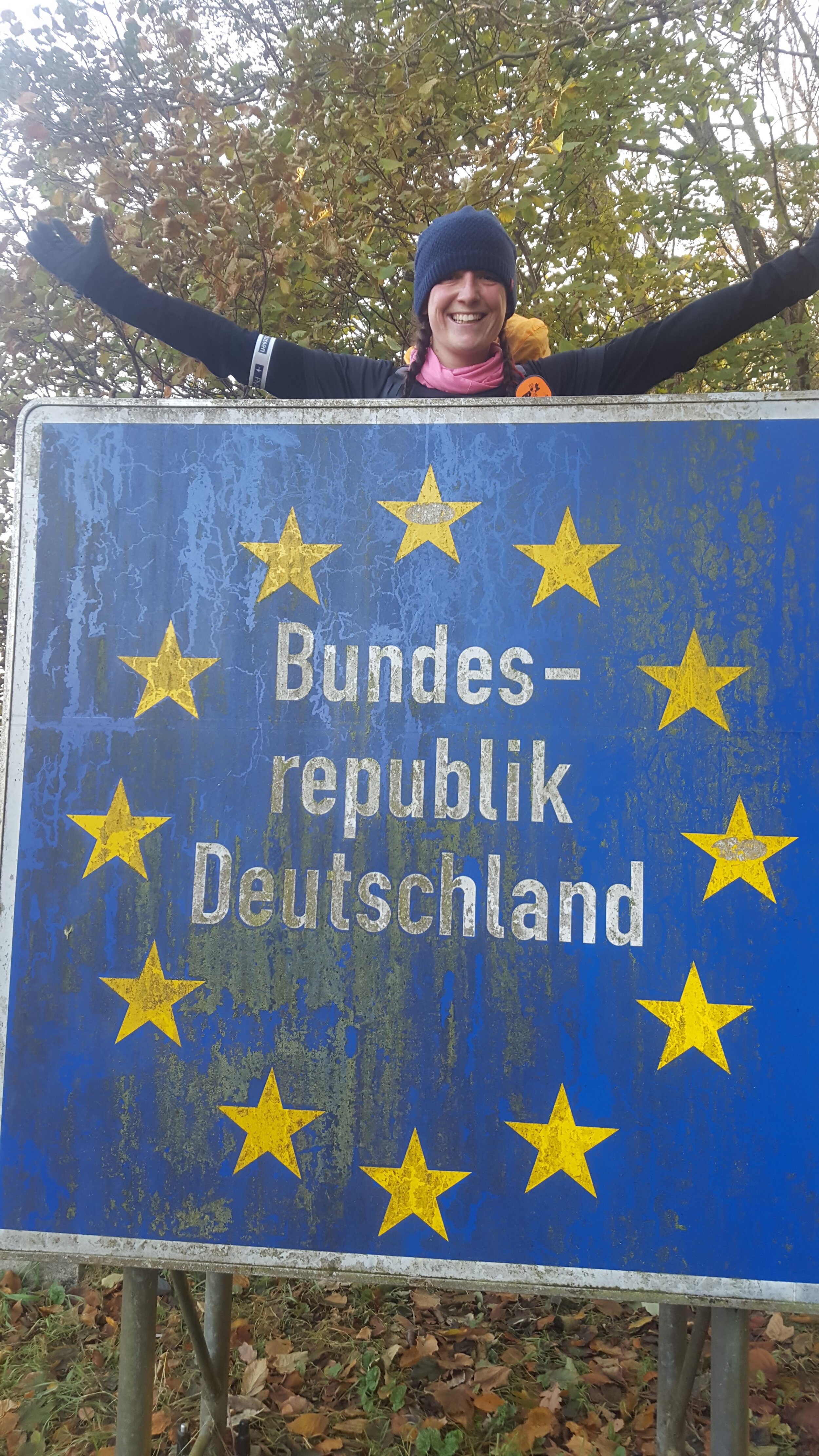Sophie Rooney: Running 3000km across Scandinavia
Having been a competitive kayaker and swimmer, Sophie Rooney is no stranger to a challenge. She joined us over Zoom from her home in Cumbria to discuss the story behind ‘Rundinavia’ - her most significant test of endurance yet.
Explaining that her adventure began with a chance visit to a pub, we talked with Sophie to understand how she was influenced to run the length of Scandinavia.
Sophie grew up as one of six children in the village of Hook Norton, Oxfordshire. With a keenness in sport and the outdoors from early on, she took to competitive swimming from the age of eight. “I was always the one who would be willing to do the sporty things. None of my siblings are like this,” she said as we wondered where she got her active disposition from. Whilst she hated coming back after being away on PGL adventure trips, her siblings were glad to be home. And, on summer holidays to France, she was the one to join her dad for bike rides in the Alps.
In her teens, Sophie went on to pick up kayaking and eventually made the decision to stop swimming competitively. For five years, she threw everything into kayaking. Her days revolved heavily around training, leaving little time for socialising. In time, this paid off. She was asked to represent the country in European regattas and ultimately the World Student Games in Belarus - an incredible achievement. However, in 2015 she was pushed into taking a step back from the sport after narrowly missing out on selections for the European Championships - by less than a second. Devastated by this and after a few teary conversations with her coach, she decided to take a break from kayaking, realising that if she was going to invest so much of her time into something, she had to love the journey regardless of the outcome.
Six months after her decision to take a break from kayaking, Sophie had finished her thesis and was in a nine to five job that she found herself becoming increasingly dissatisfied with. But, unbeknownst to her, one unsuspecting invite was about to take her life on a different and much more exciting course. A potential date, who she had met up with just once before, had asked her to go with him to a YesTribe event being held at a pub. While she thought that it wouldn’t be of any interest to her, she agreed to go anyway.
Grabbing two beers upon her arrival, Sophie sat down in a room full of strangers and awaited a presentation, feeling unsure of what to expect. However, she soon found herself intrigued, watching and listening intently. The speaker, Aleks Kashefi, spoke about how he had run from Land’s End to John O’ Groats, and about how he was planning to also run the length of Europe. Recounting the evening, Sophie said: “I sat there and thought ‘wow, this sounds really cool’. At the time I did not have any interest in running whatsoever but it was the way he told the story.”
To illustrate his venture, Aleks presented his audience with images of the sorts of injuries that he had received along the way. As most winced at this, Sophie watched on in wonder. After
the talk, having been “slightly influenced by the beers,” she impulsively decided to ask Aleks if she could go with him for the Norwegian section of his Europe run. Much to her surprise he agreed and they exchanged contact details. At this stage, Sophie had not run further than ten miles in her life and the idea of it only created images of suffering in her mind. Despite this, she wished to go on a real adventure - something beyond competitive sports. Soon after their first meeting, Sophie began
training and eventually chose to challenge herself even further by running the length of Scandinavia rather than just a portion of it. This meant that she would have to run a total of over 35000km across four countries (Norway, Finland, Sweden and Denmark) before finishing in Germany.
“I think that I got my competitive side out of my system during my years spent kayaking.”
Although she had a good degree of base fitness from kayaking, it was initially a struggle for Sophie. As she started to train with Aleks, she found it difficult to keep up with him and was bewildered by the constant energy he appeared to have. “I gave myself only three months to prepare during which time I managed my first 50k. However, this resulted in a stress fracture. It wasn’t going well and became clear that he was going to have to do his run and I was going to have to do my run,” she said. Whilst she received numerous injuries in her journey to becoming an ultrarunner having only ran the occasional 5km before, she was able to make a significant amount of progress and began to see running in a more positive light.
On the 3rd of August 2016, Sophie and Alek set off on their journey along the E1 trail, carrying everything they had brought with them in their backpacks. Starting in Norway, Sophie immediately fell in love with the dramatic scenery around her. As a geographer by trade, it was thrilling for her to observe the kind of images she had only seen in textbooks. Recalling the views, she told us: “I love mountains and to me Scandinavia is one of the most perfect landscapes. I’m learning Norwegian in the hope that one day I can convince my other half that we should go and live there.”
However, the trip proved difficult from day one - the pair had trouble navigating the trail due to its lack of visibility. Venturing in some of the most remote places that she had ever set foot in, Sophie’s idea of discomfort was replaced with a whole new meaning. Her feet were in a “terrible way” and she couldn’t help but feel guilty that she was slowing Aleks down. After ten days, she made the decision to continue on her own; planning to follow roads rather than the trail. This meant that she could feel safer in terms of navigation and being closer to help. “I was terrified because it had suddenly gone from me running with someone to me running on my own,” she said, “I genuinely thought that I was going to be attacked by a bear or a moose or something whilst camping out.”
The support she received from those back home was invaluable during this moment and pushed her to carry on. Facing the elements of the outside world, the achiness of her body each day and swarms of mosquitoes, she made it through Finland and into Sweden alone. Around 30 days in, Sophie became so ill that she was forced to stop in Kiruna, Sweden. In a remarkably nonchalant manner, she explained how she found out that she had a stomach ulcer and required a blood transfusion: “It had been bleeding but I was in so much pain from running that I thought it was just that. When I went to the hospital, they told me that my blood content was about half of what it should be.”
This inevitably resulted in her taking a week-long break from her journey. Nonetheless, she returned stronger and began to enjoy the process behind it more. The kindness of strangers was a joyous theme throughout Sophie’s trip. From those offering her a place to stay for the night to those showing her the best of what their countries had to offer, she felt welcome and supported all the way to her finish in Germany. By the end of her trip, Sophie had successfully raised over £2000 for her three charities: Stroke Association, Mountain Rescue and the Thomas Theyer Foundation. With this in her stride, she headed into Germany for a well-earned beer.
“I ran from Nordkapp, the northernmost point of Norway, to the German border whilst carrying everything in my rucksack”
Sophie believes that her adventure helped her to evolve as a person: “I feel like I’ve changed completely. I don’t really care what people think anymore. I’m a lot happier to do things my own way”. Her book, ‘Rundinavia’, was three years in the making and provides an in-depth look into her experience and the emotions that she felt along the way.
After reading it, I realised just how impressive the trip was - her persistence in pushing through despite all obstacles was inspiring and exemplifies what people can achieve when they really put their mind to it.
You can follow Sophie on Instagram @rooneysophie and keep up to date with her exciting new challenge and her book Rundinavia is available direct or at Amazon





